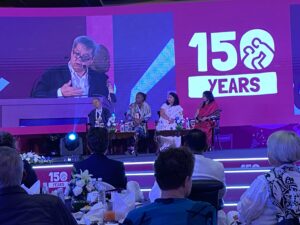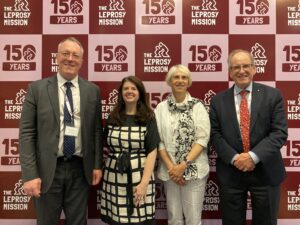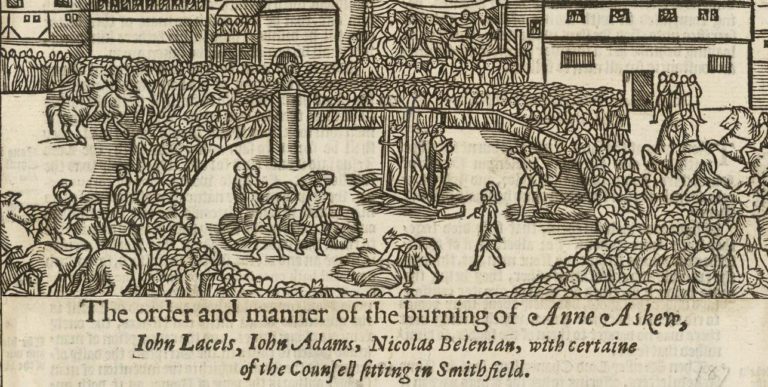
In November, people from nearly thirty countries gathered in New Delhi for the 150th anniversary of The Leprosy Mission. they thanked God for amazing progress in treating the disease and committed to strive for a world without leprosy by 2035. A world without leprosy is within sight. With improved preventative medication, diagnostic tests, and even vaccines, the tools and knowledge needed to end leprosy are in our grasp.
“It was a marvellous time of celebrating the progress we’ve made, but also longing to finish the job,” said Greg Clarke, the CEO of The Leprosy Mission Australia (TLMA). “We committed under God to a strategy of ‘triple zero’ goals—zero transmission, zero disability and zero discrimination and stigma by 2035. We don’t want to be here for our 200th—that’s the goal.”
Practical Care and Christian Witness
Clarke, who joined TLMA after leading Bible Society Australia through an intense growth phase, says he is excited at the thought of being part of ending a disease.
“TLM has a very strong reputation as a beautiful Christian charity that focuses on being Christlike. When I mentioned the job to my wife, who’s a doctor, she said, ‘Brilliant, let’s get in there and help knock off leprosy.’ So, that was part of my drive to take on the role.

“The combination of practical care and Christian witness appeals to me as a wonderful way to put faith into action. I just saw that everywhere I looked in The Leprosy Mission … This is a disease that many people wanted to have nothing to do with until drugs were available to cure it. All that could be shown was compassion, and the meaning of compassion is to suffer alongside people, which is exactly what the earliest kind of missionaries to people with leprosy did.
“And praise God they did! I don’t think it’s exaggerating to say that Christians were the most prominent in caring for people with leprosy. They looked to Jesus’ behaviour towards the outcast in the Scriptures, which set an example for us. How could we do otherwise?”
The Origins of The Leprosy Mission
The world in which Irish missionary Wellesley Bailey first witnessed the suffering of people with leprosy was one without hope for a cure or even a normal life; they were condemned to live outside society. The sight shattered Bailey, a teacher working for the American Presbyterian Mission in Punjab in the 1870s. He had thought the disease was something confined to the Bible. But like Jesus, he saw the person hiding behind the terrible disease and felt deep compassion.
“I almost shuddered, yet I was simultaneously fascinated, and I felt that if there was ever a Christlike work in the world, it was to go amongst these poor sufferers and bring them the consolation of the gospel,” Bailey said. Bailey formed what became The Leprosy Mission (TLM) in 1874 after his wife Alice’s ill health forced them to return to Ireland. Beginning as a small fundraising campaign among friends, TLM soon became a worldwide movement.
In the 1920s, TLM contributed to developing the first treatment for leprosy, Chaulmoogra oil. Although the results were limited, this treatment created the first spark of hope for people affected by leprosy. This work eventually led to the development of a more effective drug, Dapsone, in 1945, which freed some people affected by leprosy of their symptoms. In the 1970s, TLM operated thirty hospitals worldwide and worked with scientists to develop the first fully effective treatment, Multi-Drug Therapy (MDT). Finally, in the 1980s, people could be cured of leprosy in as little as six months. With today’s treatments, most patients are no longer infectious within twenty-four to forty-eight hours of beginning treatment. Even better, the cost of MDT is covered; their treatment is free.
However, the bacterium that causes leprosy is very slow to replicate and can take a decade to cause illness that triggers a medical visit and treatment. Furthermore, there is a stigma around leprosy, which means people suffer in silence rather than seek out help.
“So our challenge,” Clarke explains, “is to find the most in need, the most neglected, the most remote people and get them the wonderful medications that we have promptly so that they don’t get disabled by the disease. We also need to educate people about what the disease is and is not, and extend our compassion where others might ostracise.”
Australian Doctors Play a Pivotal Role

Australian doctors have played a key role in helping people live a life free from leprosy and creating a new life after the disease. Grace Warren, now ninety-five, was a pioneering surgeon who became superintendent at TLM’s hospital in Hong Kong. Dr. Warren was responsible for the regular care of patients in the Leprosarium and made significant contributions to their medical treatment and surgical management. She became known in Australia for her reconstructive surgery of hands, feet, and faces and care of neuropathic limbs.
Professor Warwick Britton is another mission-minded Christian medical professional committed to bringing healing and hope to people with his skills. As Bosch Professor of Medicine and Immunology at the University of Sydney and Director of Research for Sydney Local Health District and Royal Prince Alfred Hospital, he has a longstanding research interest in the control of tuberculosis and leprosy in high-burden countries. Until recently, he was the head of the International Research Committee for The Leprosy Mission. Both Warren and Britton brought Christ’s kindness and love to their work.
The Last Leg of a Long Journey
Even today, every two minutes, a new case of leprosy is diagnosed somewhere in the world. That’s 200 000 new cases a year. “Yes… leprosy is still a thing”, as the TLMA slogan puts it. So, how do we complete the last leg of the journey to defeat this ancient disease?
“The challenge with a disease that’s on the way out is how you get to the end,” says Clarke. “Our challenge now is to detect it fast enough since the cases are getting harder to find.”
He explains that eradicating leprosy gets harder in its final stages because people affected live mostly in poverty and are difficult to reach.
“It’s going to be a very challenging final bit of work, and it needs the alignment of governments, charities, private philanthropists, and research working together,” says Clarke. “The problem is getting the money, will and commitment of nations, governments, and businesses worldwide to prioritise it.”
Clarke says one initiative that needs government funding is developing a vaccine that can be rolled out in countries where leprosy is still endemic, such as India, Nepal, Brazil, Nigeria, and Timor-Leste.
“We have one already, but it’s partly effective. There’s very encouraging work that a better one is on the way (LepVax). We need to support that work … You probably wouldn’t vaccinate everyone, but in areas where leprosy is endemic or suspected to be, you could vaccinate that population.”
Raising Awareness
With the battle against leprosy in its final stages, TLMA’s focus is now on raising awareness and garnering support to finish the mission. This past Tuesday, December 10, the TLMA team ran Giving Shoesday, a social media campaign in which people were encouraged to swap their footwear with others, experience discomfort for a few steps and take a photo they could share on social media.
Giving Shoesday was inspired by the fact that foot care is tricky for people with leprosy. If they walk barefoot, they can develop ulcers or damage their feet because they don’t feel the pain to alert them to an injury. And yet, getting comfortable shoes that fit properly is problematic. The campaign formed part of The Leprosy Mission Australia’s Christmas appeal to provide assistive footwear for people suffering from leprosy worldwide.










